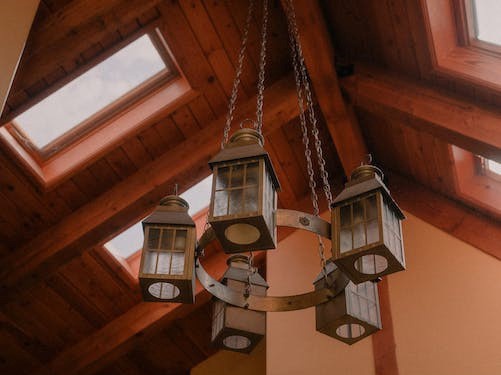
Exploring the corridors of a centuries-old building often sparks curiosity about the stories concealed within its walls. Historical structures hold a unique allure, carrying tales from times long past. However, there lies a perpetual challenge in preserving these architectural gems while trying to add modern modifications and conveniences.
This challenge becomes particularly interesting when considering the incorporation of features like skylights. How can these modern openings to the sky harmonize with the historical essence of the structures they grace? Let's explore the unique connection between the preservation and progress of skylights in historical buildings.
The Importance of Skylights in Historical Buildings
When thoughtfully incorporated into historical buildings, skylights offer advantages beyond their aesthetic appeal. These advantages contribute to preserving the building, enhancing its functionality, and creating a more sustainable and comfortable indoor environment.
Natural Light Preservation
Skylights enable preserving a historical building's connection with natural light, maintaining a continuity that resonates with the original design intent. This is particularly crucial in spaces where reliance on artificial lighting may compromise the authenticity of the historical atmosphere.
The diffusion of natural light through skylights can significantly enhance occupants' visual comfort. This creates a pleasant and inviting atmosphere and allows for appreciating architectural details that might be obscured in artificial lighting.
Energy Efficiency and Sustainability
By harnessing natural sunlight, skylights reduce the need for artificial lighting during the day. This lowers energy consumption and aligns with sustainable practices, promoting a more environmentally friendly approach to building operations.
Skylights can be strategically positioned to capture passive solar energy, contributing to heating in colder seasons. This passive solar gain adds an eco-friendly dimension to historical buildings, aligning with contemporary sustainability goals.
Enhancing the Overall Indoor Environment
Skylights foster a biophilic connection by bringing elements of the outdoors inside. This connection to nature has been associated with improved well-being, reduced stress, and increased productivity among occupants.
The integration of skylights allows for versatile design possibilities, creating visually engaging interiors. From atriums to open-ceiling spaces, skylights allow architects to reimagine historical interiors, enhancing their functionality and appeal.
Notable Examples of Skylights in Historical Buildings
Across the globe, numerous historic buildings stand as testaments to integrating skylights in various architectural styles. These examples showcase skylights' adaptability and enduring appeal in different historical contexts.
The Pantheon, Rome
The Pantheon in Rome is a great example of smart skylight design from ancient times, showcasing the cleverness of Roman architecture. At its core is the oculus, a well-placed opening in the dome that lets sunlight fill the inside, creating a captivating play of light and shadow. As the sun moves, the changing light patterns transform the ancient walls and marble floors, giving us a timeless show that combines technical skill and artistic flair.
The Crystal Palace, London
The Crystal Palace in London, constructed for the Great Exhibition of 1851, showcases 19th-century advancements in skylight technology. Featuring an extensive glass roof, it brilliantly lit up the exhibition space, symbolizing the harmonious blend of industry and design in the Victorian era. This innovative use of skylights provided ample natural light and became a visual representation of the progressive spirit of the time.
The Louvre Pyramid, Paris
The Louvre Pyramid in Paris brings a modern touch to the iconic museum through its contemporary skylight design, offering a fresh interpretation of historical architecture. Functioning both as an entrance and a natural light source, this glass pyramid seamlessly integrates with the historic surroundings, marrying the old and the new in a visually striking manner.
Preservation Guidelines and Best Practices
Preserving the historical integrity of buildings while integrating modern features like skylights demands a delicate dance between tradition and innovation.
Collaboration with Preservation Experts and Architects
Initiating a skylight project in a historical building necessitates collaboration with preservation experts and architects well-versed in historical restoration. Their expertise ensures that any intervention respects the structure's original design, materials, and craftsmanship.
Preservation experts and architects work together to take a holistic approach, considering not only the immediate impact of skylights but also their long-term effects on the building's structural integrity and historical significance.
Compliance with Heritage Regulations and Standards
It is essential to delve into the building's history and gather detailed information to support plans for skylight integration. The documentation process is crucial for compliance with preservation guidelines.
It is also important to navigate through local and national preservation regulations carefully. This ensures that any proposed changes, including skylight integration, meet all necessary criteria and seamlessly align with preservation requirements. The goal is to ensure every detail fits smoothly within the complex landscape of heritage standards.
Balancing Modern Requirements with Historical Authenticity
The design of skylights must be sympathetic to the historical aesthetics of the building. Thoughtful integration ensures that new additions enhance rather than compromise the architectural character.
Choosing materials that align with historical building elements is crucial. From frame design to glazing materials, every component should be selected with a keen eye on authenticity, ensuring a seamless integration into the existing structure.
Balancing modern requirements involves adaptive reuse, where skylights serve contemporary needs without overshadowing the historical significance. Whether for energy efficiency or enhanced functionality, integrating skylights should be a carefully considered evolution rather than a departure from the building's essence.
Final Thoughts
The harmonious integration of skylights into historical buildings strikes a balance between preserving the architectural legacy and introducing contemporary elements. Skylights offer practical benefits and play a crucial role in maintaining the authentic character of these structures and fostering sustainable, welcoming spaces.
Explore the seamless integration of skylights in historical buildings with VTECH Skylights. Contact our experts today to embark on a journey of preserving architectural legacy while embracing modern innovation. Enhance the beauty and sustainability of historical structures with VTECH Skylights – Your Gateway to Timeless Brilliance.